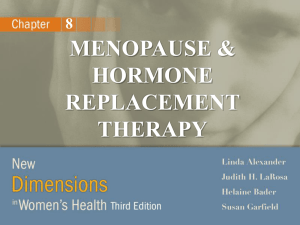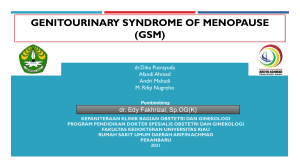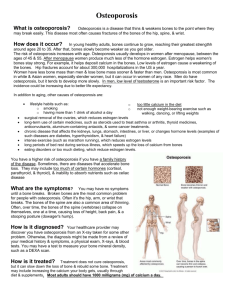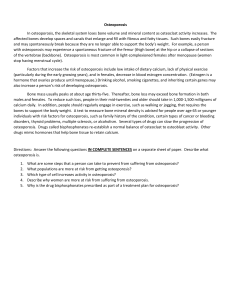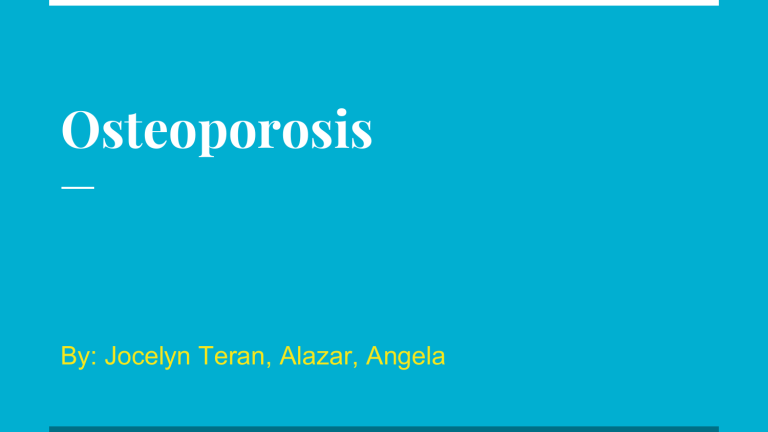
Osteoporosis By: Jocelyn Teran, Alazar, Angela Brief description of individual's condition ● Eleanor, a 45-year-old perimenopausal woman, experiencing hot flashes and nausea, soreness of back. She has been smoking for the past 20 years. She is considering HRT (hormone replacement therapy) to prevent osteoporosis. Perimenopausal ● Is the transitional time around menopause. Menopause is when a woman's periods stop. It’s marked changes in the menstrual cycle, besides other physical and emotional symptoms. This time can endure 2 to 10 years. Explain how menopause affects a woman’s hormonal levels ● Estrogen stimulates the growth of breast tissue, maintains vaginal blood flow, and preserves the bones. During menopause the levels of estrogen become unpredictable and it falls to a very low level. Also during the menopause the production stops during the menstrual cycle when there is no ovulation and after the final menstrual period. Explain how estrogen affects calcium levels in bones. ● Healthy bones equals balanced relationship between calcium and estrogen. Calcium is important for the protection and growth of bones and estrogen aids the intestinal absorption of calcium which will eventually reach the bones and make them stronger and grow appropriately. Explain how smoking affects estrogen levels. How does this affect calcium levels? ● Smoking decreases the levels of estrogen in both male and female causing the body have less ability to absorb vitamin D, and causes the bones not have enough calcium and break easily. What is HRT? Who is it intended for? ● HRT stands for Hormone Replacement Therapy. It’s intended to replace the hormones of a woman's ovaries that no longer have the ability to produce once they go through menopause. Based on medical studies, what are the pros and cons of HRT? ● Pros of HRT are that it reduces hot flashes, night sweats, vaginal dryness, sleep problems, mood changes, and the risk of developing osteoporosis. ● Cons of HRT are slight increases in the risk of breast or uterine cancer, heart attack, and stroke. Describe at least four other options (drugs) available to men and women to help prevent and/or treat osteoporosis. 1. Raloxifene prevents and treats postmenopausal osteoporosis. It is from a class of drug, called Selective Estrogen Receptor Modulator that appear to Prevent bone loss in the spine, hip, and total body. 2. Alendronate treats bone loss that result from glucocorticoid medications like prednisone or cortisone and is approved for treating osteoporosis in men. Alendronate plus vitamin D is approved for the treatment of osteoporosis in postmenopausal women and in men. 3. Teriparatide is an injectable form of human parathyroid hormone. It is approved for postmenopausal women and men with osteoporosis who are at high risk for having a fracture. 4. Calcitonin is an injectable or nasal spray that slows bone loss, increases spinal bone density, and relieves the pain associated with bone fractures. Decision about HRT ● We believe Eleanor should start hormone replacement therapy because it can reduce her risk of getting osteoporosis. Eleanor said she wants to stay healthy for her husband and son, which can’t happen if her bones are weak and brittle like her neighbor’s.
